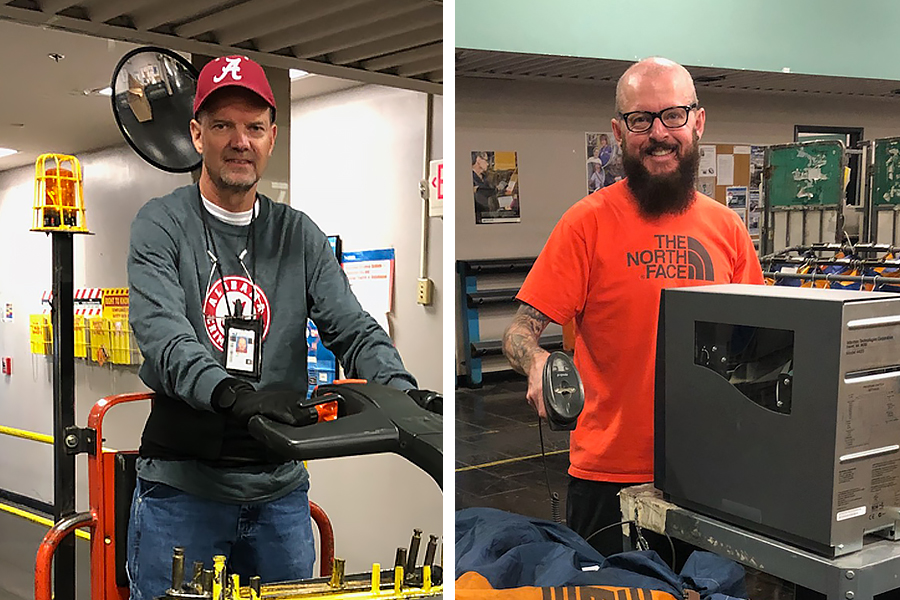Mike McCord and Tim Smith have a unique bond at the Huntsville, AL, Processing and Distribution Facility: They’re both deaf, and they both rely on a variety of ways to receive and give information at work.
“It’s nice having a co-worker who is also deaf because we can help each other out,” said McCord, a mail clerk.
“I try to get along with all my co-workers and to make sure the mail is dispatched on time,” said Smith, a mail handler. “It’s satisfying to me.”
Both men use real-time video interpreting technology to participate in routine, short meetings like stand-up talks, but they require an in-person sign language interpreter for longer meetings and training classes.
Some colleagues communicate with McCord and Smith through “home signs,” which means they use sign language to spell the letters of common words like “hello” and “goodbye.”
Other co-workers use hand gestures or notes.
“Most of the time, I write notes back and forth,” Smith said. “Sometimes people are able to speak clearly enough so I can read their lips.”
McCord can’t read lips and relies more on note writing. He said being deaf has unique advantages, like not getting distracted when people are talking, which helps him get his job done faster.
The men, who’ve each logged more than 25 years with USPS, want to be treated the same as everyone else.
“I don’t feel any different,” Smith said.
The Postal Service, like other organizations across the United States, is recognizing the contributions of employees with disabilities throughout October, which is National Disability Employment Awareness Month.
Lydia LeVan, the Huntsville plant’s distribution operations supervisor, said it’s important for managers to learn to communicate with employees with disabilities.
“When I started as a supervisor, I made sure I learned the sign language alphabets, which has been helpful,” she said, adding that it’s been particularly rewarding to work with McCord and Smith.
“I’m so proud to work with them,” LeVan said. “They can work just like everyone else.”
